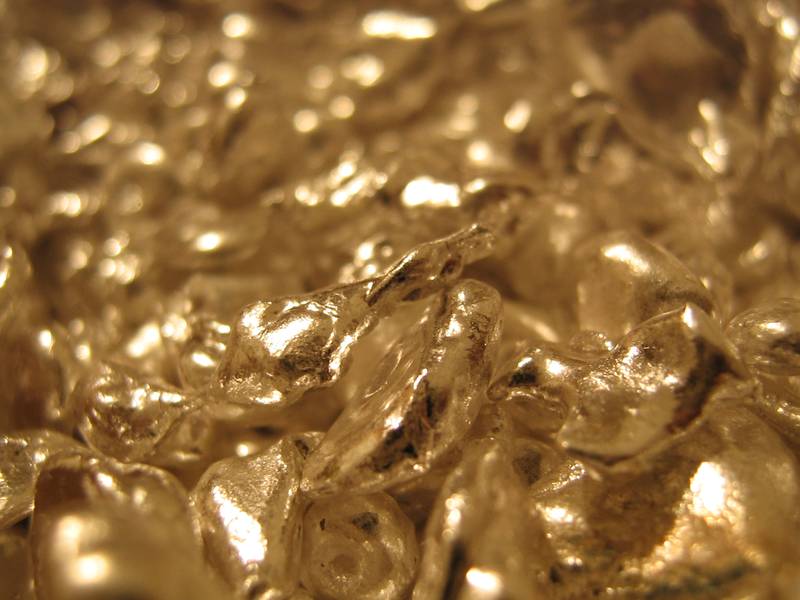Close up of silver flake
The image depicts a close-up view of an individual flaked piece of elemental Silver (Ag), which has been extracted through the meticulous purification and refining process. This particular specimen originates from gold mines in Slovenia, renowned for their rich veins of both silver and gold ores.
The silvery-white hue is characteristic to pure elemental Silver, a highly conductive metal that reflects light beautifully due to its high ductility and malleability properties. The flaked shape results from the refinement process where molten silver is cooled rapidly or hammered into thin sheets for further purification steps before reaching this state of purity.
Silver, in contrast to gold, does not occur naturally as elemental metal but rather exists within minerals like Argentite (Ag2S) and Chlorargyrite ((AgCl)). During mining operations at Slovenian sites such as Doberdó or Zreče, these silver-bearing ores are extracted.
The refining process involves several stages including smelting to separate the precious metal from associated rock materials (gangue), followed by various chemical treatments like cupellation using lead oxide and air in a special furnace known as a ‘refiner’s fire’. This method exploits silver’s affinity for sulfur over gold, allowing it to be selectively removed.
The final product of this process is elemental Silver with high purity levels (often 99% or more), which can then take on various shapes and forms depending upon the intended use - in electronics due to its excellent conductivity; jewelry for aesthetic appeals, etc. The flaked texture seen here might be part of such preparatory steps before further shaping into coins, bars, or other desired silver products.
